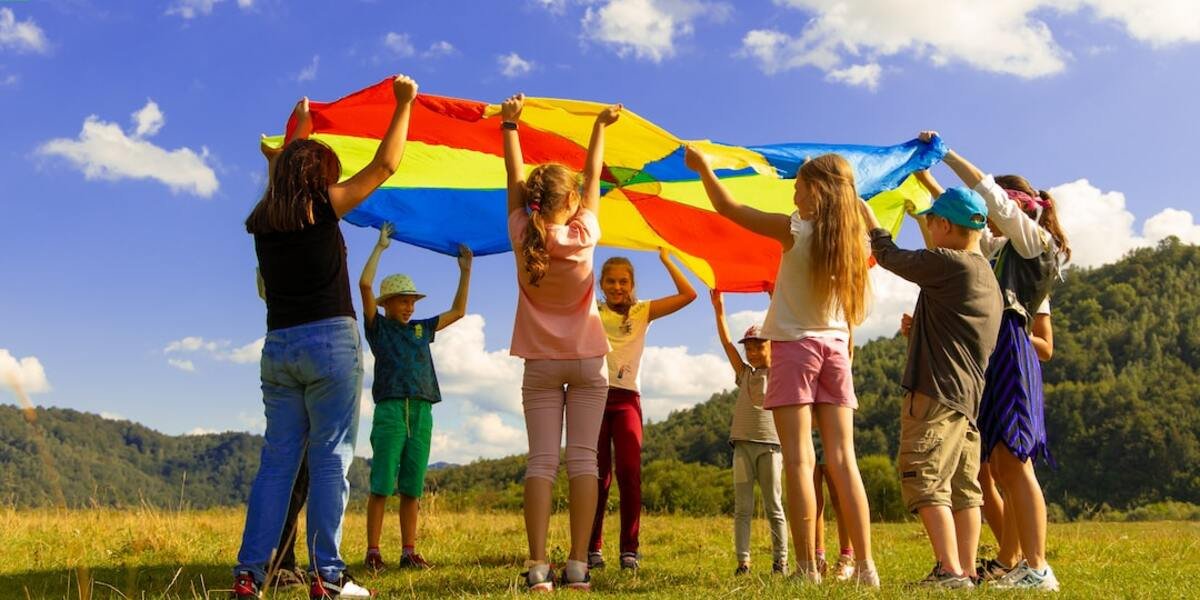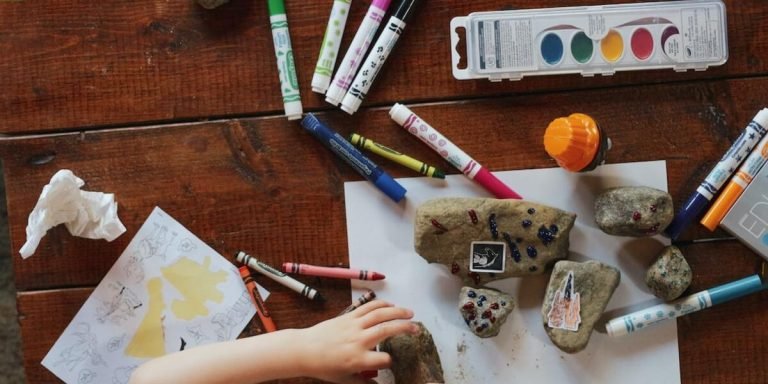What is Kinesthetic Learning and its Role in Childhood Education
Understanding different learning styles can be the key to unlocking your child’s potential. The question “What is kinesthetic learning?” often comes up in discussions on childhood education. Simply put, it refers to a method of learning which involves carrying out physical activities rather than listening to lectures or reading textbooks.
Kinesthetic Learning, also known as Experiential or Activity-Based Learning, emphasizes understanding over rote memorization. It encourages children to interact with their environment and learn from hands-on experiences — an approach that resonates well with youngsters who are naturally curious explorers at heart.
Did you know?
Did you know that kinesthetic learning is not just about physical activity? It also encompasses tactile experiences, making it an effective educational approach for children who learn best by ‘doing’ and engaging their senses.
Understanding Kinesthetic Learning: The Core of Experiential Education
Kinesthetic learning, at its core, is an educational approach that emphasizes physical activities to comprehend and absorb new information. It’s what many of us intrinsically did as children – touching everything around us, exploring our environments through movement and experiencing the world first-hand. This intuitive method of learning remains relevant even today in 2023.
Often termed ‘experiential education,’ this form of learning empowers youngsters to acquire knowledge through active engagement instead of passive absorption. For instance, a child may better grasp mathematical concepts if they are taught using tangible items like blocks or counting beads than just on paper.
Moving beyond traditional lecture-based pedagogy provides students with a vibrant platform for grasping complex ideas via practical experiences. Interactions with real-world objects facilitate significant connections between academic theories and concrete applications—a vantage point essential in molding holistic learners equipped for the dynamic future encounters.
By marrying kinesthetic practices into mainstream curriculum delivery structures we tap into not only cognitive but also tactile capacities augmenting overall comprehension efficiency level—an invaluable circumstance considering increasingly intricate subject matters introduced within contemporary scholastic frameworks during recent years leading up to 2023.
Defining Kinesthetic Learning in Modern Classrooms
Kinesthetic learning, often termed as tactile or hands-on learning, is a teaching style that engages students’ bodily movements to process and understand new information. But what is kinesthetic learning exactly?
In simple terms, it’s an educational approach where children learn by doing activities rather than merely listening to lectures or reading text. It hinges on the concept of experiential education – gaining knowledge through experiences.
Picture this: instead of lecturing about gravity forces in a physics class, imagine pupils creating their model roller coasters for understanding how gravity works in real life applications! That’s precisely how practical aspects come into play with kinesthetic learning.
In 2023 modern classrooms are increasingly embracing kinesthetic methods due to numerous benefits they offer. This includes boosting memory retention levels as well as improving focus and engagement among learners who might find traditional lecture-based classes dull and uninteresting.
Furthermore, it encourages independent thinking while fostering creativity – vital bridges that connect academic theory with actual world scenarios effectively.
This shift towards activity based teaching strategies isn’t happenstance either; research indicates children tend toward being natural ‘kinesthetes’. By promoting active participation in lessons- we’re harnessing innate instincts productively within our syllabuses!
So if your child seems restless during homework time or adopts unconventional approaches when tackling assignments maybe they aren’t really ‘problematic’. They could be demonstrating signs of being a kinetic learner craving for experiential learning methodologies!
How Kinesthetic Techniques Reinforce Academic Concepts
Kinesthetic learning, often seen as a cornerstone of experiential and activity-based education methods, fosters an environment where children actively engage with the material they’re studying. But what is kinesthetic learning exactly?
Simply put, it involves creating direct experiences in which students participate physically instead of merely listening to lectures or jotting down notes.
Now let’s consider how these techniques reinforce academic concepts core to childhood education. The beauty lies in their ability for application across several areas – from math and science lessons to language arts and history.
In Mathematics classes, stepping into the shoes of shapes can do wonders! Instead of passively reading about squares or triangles on paper, kids get involved by tracing large versions on the floor using ropes or duct tapes. They are then asked to count corners and edges while walking around them; nurturing a deeper understanding than traditional rote memorization ever could!
Science becomes far more appealing when intertwined with hands-on experiments rather than detached facts that seem arcane at first glance. For instance: planting seeds themselves so they can observe firsthand how plants grow sparks curiosity along with strengthening comprehension concerning life cycles.
Language Arts get particularly interesting once role-playing sessions enter fray where learners emulate characters from stories they’ve read recently fostering empathy apart bolstering critical literacy skills such interpreting motivations behind actions protagonists undertake etc.
Implementing Activity-Based Strategies for Diverse Learners
In the realm of childhood education, “Activity-Based Learning” or ABL is quickly gaining momentum as a beneficial approach to teaching diverse learners. At its core, this pedagogic strategy leverages interactive activities to facilitate learning and development among children. Drawing from theories like kinesthetic learning – which emphasizes physical actions in the process of acquiring knowledge – it provides an inclusive environment for students with different learning styles.
Implementing activity-based strategies doesn’t just revolve around including games or hands-on tasks in lesson plans; rather it involves designing instructional methods that engage multiple senses thereby fostering improved understanding and retention. For instance, employing mathematical blocks allows visual-spatial learners to interact tangibly with abstract concepts while also catering to their desire for movement – a key aspect indicative of kinesthetic learners.
As educators move away from traditional rote-learning techniques towards more engaging methodologies aligned with contemporary thinking, ABL positions itself as an indispensable tool amidst our toolkit. Being integrative by nature, these approaches enable cognitive flexibility among young minds making them well-equipped deal breakers ready for tackling future challenges effectively and efficiently.
Tailoring Activities to Accommodate Different Learning Styles
Recognizing the importance of addressing different learning styles in childhood education is essential. This includes understanding what kinesthetic learning is, alongside visual and auditory learning methods. Kinesthetic learners, often termed as ‘do-ers,’ learn best through hands-on experiences – physically engaging with their environment.
In a diverse classroom setting with varying learner needs, tailoring activities to accommodate these differences can yield fruitful outcomes. Activity-based strategies have emerged as effective teaching tools because they provide experiential opportunities that appeal to students’ natural inclination for active involvement.
For instance, simple math concepts can be taught by allowing children to count objects like pebbles or buttons – an activity that benefits all types of learners but particularly advantageous for kinesthetic ones who’ll enjoy manipulative tasks while simultaneously absorbing lessons effectively.
Similarly interactive games such as puzzle solving which requires physical movement from sorting pieces or role-play scenarios where kids enact real-life situations foster cognitive development promoting retention and application of knowledge better than conventional lecture-style teachings.
Measuring the Impact of Movement and Hands-On Tasks on Retention
In the realm of childhood education, kinesthetic learning carries unmatched importance. As we navigate through 2023, a key question for parents and educators alike is – what is kinesthetic learning? Kinesthetic learning or tactile learning leverages physical activities to aid understanding and memory rather than just listening or seeing.
When children engage in activity-based strategies like arts and crafts, outdoor sports or laboratory experiments they are subconsciously absorbing information while having fun. Implementing such tactics sparks interest among students which inherently boosts their comprehension levels.
Next up comes measurement – an essential component to ensure effective implementation of these strategies. Evaluating the impact can be done by observing changes in student’s interactions with families at home as well as peers & teachers at school post introduction of activity-based experimental methods.
Another concrete way could include quizzes based on practical concepts taught during these sessions coupled with comparison analysis from previous scores without this approach being introduced priorly.
Tools and Resources for Enhancing Kinesthetic Experiences in Education
Implementing kinesthetic learning experiences in education can be a transformative approach. These experiences focus on the ‘doing’ aspect of learning, aiding children’s understanding and retention of information through physical movement or creative tasks. Recognizing its value is essential; equipping ourselves with tools and resources to bolster this teaching method makes an equally critical move.
As we delve into 2023, technology is reshaping educational landscapes like never before while traditional play-based activities continue to hold their ground for younger learners. Digital platforms that allow interactive simulations offer older students opportunities for hands-on experience from the comfort of their classrooms or homes. For example, virtual reality (VR) equipment brings complex scientific concepts alive by immersing pupils within them virtually.
At the same time, board games aren’t losing out either when it comes to enhancing kinesthetic experiences in early years’ settings – weaving fun into fact-learning has proven effective repeatedly over decades! The key lies equally in employing tactility engaging methods – think clay modeling sessions explaining geological formations or gardening projects illustrating plant growth cycles!
Although our world continues to undergo massive digital transformation as we progress deeper into this decade, let us remember that optimal experiential learning blends technological advances with basic tactile interactions adeptly crafted towards each learner’s unique needs.
Incorporating Technology into Kinesthetic Teaching Methods
Understanding what is kinesthetic learning can open up a world of possibilities for enhancing children’s educational experience. Kinesthetic learning, also known as tactile or hands-on learning, involves students carrying out physical activities rather than merely listening to lectures or watching demonstrations.
In our tech-savvy age where smartphones and tablets are part and parcel of life even for the youngest learners, technology has the power to enhance these kinesthetic experiences significantly in education settings.
Next on line we have virtual reality (VR) systems which take experiential activity-based further by immersing pupils into an entirely different environment related to their lesson – effectively allowing them ‘experience’ history or science first-handedly instead just reading from textbooks about it!
Utilizing Classroom Space Effectively to Promote Active Learning
Involving students actively in the learning process provides an excellent platform to achieve better results. A significant way to promote active or kinesthetic learning is by utilizing the classroom space effectively. So, what exactly does this entail?
Let’s delve into it.
The first step involves converting traditional classrooms into interactive zones that align with today’s dynamic education standards. This could mean rearranging furniture and seating arrangements that encourage group activities and discussions, fostering more personalized interactions between students.
A corner dedicated towards a ‘Discovery Zone’ proves effective too where you can place objects related to your lesson plans letting children explore them freely under guidance when required but also encouraging self-learning through tactile responses aiding their understanding further about ‘what is kinesthetic learning’.
Don’t overlook opportunities outside regular patterns such as wall spaces around your classroom either! Wall-based educational displays provide an array of opportunities for experiential exploring while walking down memory lanes at future times reminding past learnings positively impacting skill reinforcement processes intrinsically linked with activity based training sessions.
Conclusion
In essence, understanding “what is kinesthetic learning” opens the door to a whole new world of interactive and tactile learning experiences that can greatly benefit our children’s academic journey. It allows us to reimagine education in ways that are exciting, engaging and most importantly, effective for each unique learner. Truly embracing this concept could be transformative not only for your child’s learning but also their overall relationship with knowledge.
So whether you’re a parent seeking insights on how best to support your child’s educational needs or an educator looking at innovative teaching strategies, remember – every movement counts! Don’t stop here; there is plenty more information around childhood education waiting just one click away on our website. Seize the opportunity now – delve deeper into other resources providing valuable guidance specifically tailored towards parenting & educating youngsters successfully.







